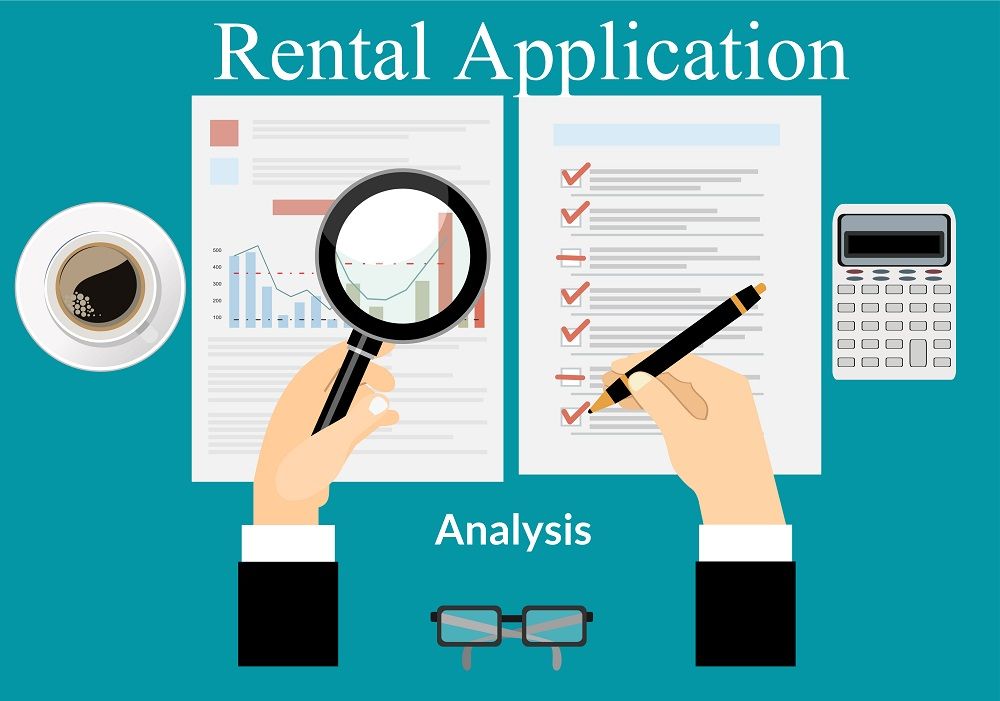Evaluate a Rental Application
Dustin Edwards • January 27, 2020
4 Items to Evaluate on a Rental Application

Leveraging the power of the internet it is easy to find a rental application. Or even if you don’t want to do that you could go into a Staples or Office Depot and pick up a packet of “Rental and Credit Check”. If you review the forms from a few different sources you will notice that each of them are pretty similar in nature. Of course, if each rental application is nearly the same how can it be so challenging to find the right tenant?
Part of the challenge is that a rental application is like any job application. While the form remains the same for all candidates each potential candidate provides different information. The key is which information provided is going to result in the best possible tenant for your property?
Common Items on an Application
While there are many fields on an application there are a few that often draw the attention of property owners and property managers. To help you get started in evaluating a rental application consider a small sample of the following questions:
- Pets (Y/N)?
- Current Smoker (Y/N)?
- Bankruptcy (Y/N)?
- Income
Pets on an Application
Allowing pets in your Long Beach rental
is an important decision. Pets are one of the most common forms of damage to a property. Of course, what if the pet they have is a hamster? Or even 3 gold fish? When property owners often envision pets they think of the worst case scenario like an animal busting up drywall but that isn’t necessarily the case. Ask the prospective renter what pets they currently have and even if they are planning on expanding their pet family to understand if that is a challenge in their application.
Current Smoker
Smoking provides a few challenges to a property. One of the first challenges, that is often overlooked, is that of being a fire hazard. Improper disposal of a cigarette could cause even something as mundane as garbage to catch on fire and cause damage. The other damage is that of the odor as it can get into drywall and carpeting making it challenging for future renters who aren’t smokers. Of course with these challenges does this mean you don’t rent to smokers? What if they only smoke outside? What if they count “vaping” as a type of smoking? What if they are chewing nicotine gum? Take time to understand the true habits of the prospective renter to see if it is a match for you and the property.
Bankruptcy
In life few have escaped without some financial challenge. Simply because someone has had a bankruptcy in their past certainly shouldn’t eliminate them from your pool of valid applicants. Find out more about the bankruptcy to determine when it occurred. Was there a particular reason it occurred? (i.e. maybe it was in a tough economic downturn). Understanding the full story of the bankruptcy can help you to determine if this is the right renter for your home.
Income
We invite you to consider evaluating income much like a lender would evaluate income when buying a property. Someone might be willing to pay $2,800 a month in rent but if their declared income is $3,800 then that could pose a challenge. When a bank evaluates a home buyer they traditionally like to keep the mortgage payment at <45% of the monthly gross income of the applicants. As you evaluate each rental application set a rule of percentage of rent vs. gross income and evaluate each application with that same rule in mind.
Evaluating Every Part of a Rental Application
The above are just four areas of consideration to evaluate when you are reviewing rental applications for your Long Beach rental. At Beach Cities Property Management we dive into every aspect of a rental application. In addition to our expertise we leverage technology throughout the property management process. From evaluating rental applications to taking payments. During the application process we implement advanced screening methods that keep us within compliance of Fair Housing Laws and help us to identify the best possible tenant for your property. When you want to find out more about how we evaluate rental applications please call us today at (562) 888-0247.
To help you see how those rental applications can transform into value for your specific property in Long Beach we invite you to fill out our free rental analysis
form.





